13 Different Types of Houses: Which Do You Live In (or Want)?
Author: Rick Worst | Editor: Omar Alonso
Review & Research: Jen Worst & Chris Miller
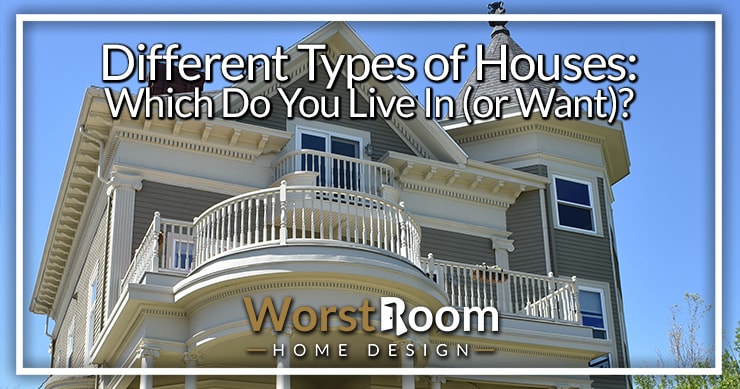
Different types of houses exist to meet the unique housing needs and desires of people all around the world. I’ve covered all of the major types of homes and houses below, but we’re not getting into different styles of design as much.
I’m primarily sticking to types you’ll find in North America, so we won’t be showcasing a chalet in Switzerland or a Cascina a Corte in Italy, for instance. We aren’t looking as closely at architectural style choices, but rather the building designs.
The distinction will make more sense as we proceed, and it’s worth pointing out there there will always be some overlap. Architectural styles would include things like Victorian homes, Colonial, Ranch, Mid-Century Modern, and so on. Building styles include the types of structures we’re featuring below...
The Main Types of House Layouts
Here are the primary floor plans you’ll find for houses, which serves as a perfect jumping off point since these types will inform a lot of the other elements we’ll be touching on. The main categories for house layouts are as follows…
Single Pen House
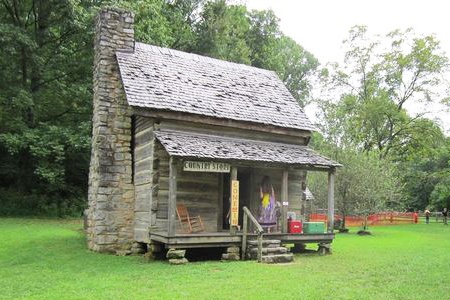
A single pen style house consists of just one room. It’s about as basic as it gets. You may also see them referred to as hall houses. These are not very common to see anymore, the modern equivalent would be something like a studio apartment, but even a studio or bachelor apartment looks luxurious next to an old fashioned single pen house.
If someone’s going through the effort to buy land and build a house, they aren’t going to leave it with just one single room anymore, there are too many other more-affordable and practical housing choices available these days. Even tiny homes usually have at least one additional room.
Double Pen House / Hall & Parlor House
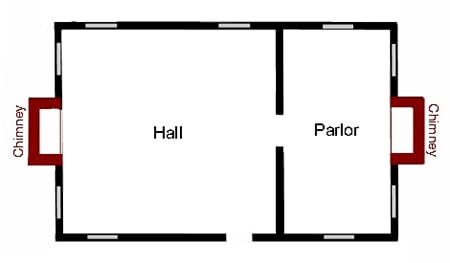
Both of these styles consist of two rooms. The distinction between them comes down to the size of each room. In a double pen, the rooms are roughly the same size, or the exact same size. In a hall and parlor house, the rooms are different sizes. The hall is the larger room of the two, and the parlor is the smaller room.
Central-Passage House

This is similar to the two aforementioned styles, except there’s a hallway that passes in between both rooms, rather than just a doorway and a wall separating them. This helps to reduce noise travelling from one room to the other.
Shotgun House
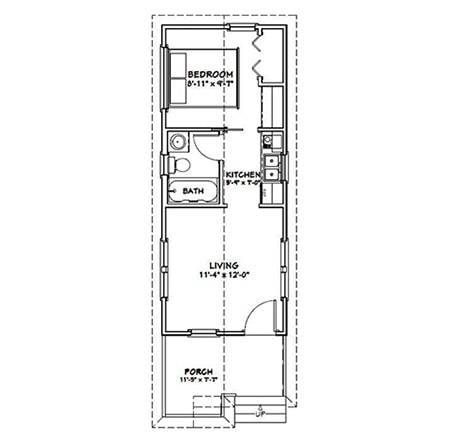
A shotgun style house does not have a hallway. You enter through the front door, typically into a living room area, and on the far wall of the first room is a door that leads you into the second room.
Side-Hall House
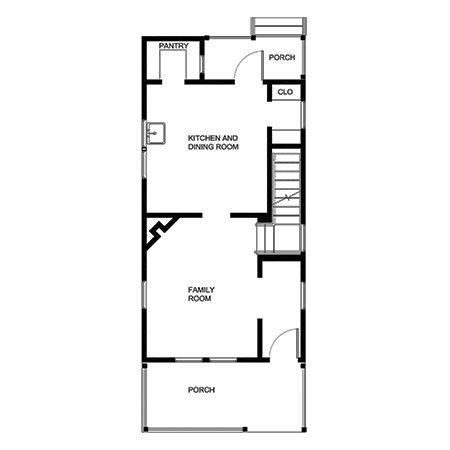
This is similar to a shotgun house, except you enter into a hallway which can take you to the further-back room without having to enter the first room. This is more practical since it increases privacy and gives a way to access the second room without disturbing the first room.
What Do Single Pile & Double Pile Mean?
Similar to when it’s used to describe the depth or height of carpets, the “pile” in this context describes the depth of the house. A single-pile home is one room deep, whereas a double-pile home is two rooms deep and can also be wider than a single room in width.
In the above categories, the single-pile houses are single pen, double pen, hall and parlor, and central-passage. The double-pile houses are shotgun and side-hall.
The difference between a shotgun house and a double-pen is that the shotgun house is deeper, whereas the double pen is wider.
With the main layouts out of the way, let’s take a look at some other types of houses and how they differ from one another.
More Types of Houses
Bungalow
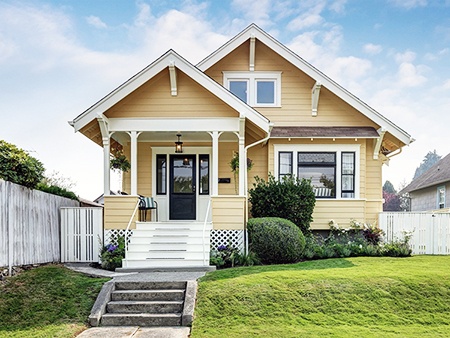
The term bungalow can be used to describe houses in a number of different layouts, the commonality between them is that it’s a one story house and the roof is shallow. The shallow-pitched roof of a bungalow doesn’t leave much space above, though there is often a basement. There are different styles of bungalows including California, American Craftsman, Chalet, and Chicago.
1.5 Story House
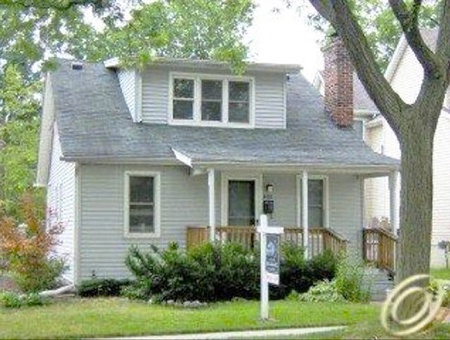
A bungalow that has a dormer-style roof can be described as a 1.5 story home. The dormer roof with a steeper pitch means that there’s room on the second floor for bedrooms, storage and so on, as opposed to a bungalow with a more shallow pitch that doesn’t leave room for much more than an attic or crawlspace.
This extra half of a story typically adds little to no extra height to a house from the outside. It won't compare to the height of a two-story house, but more so to a one-story house.
Cottage
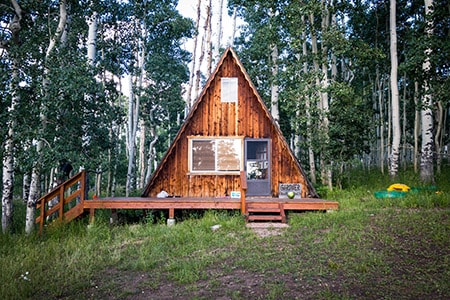
In North America, cottages are most commonly found in rural areas, often by a lake or a river and used as a getaway, or a second home of sorts. They’re usually smaller than a typical bungalow, but otherwise they’re quite similar.
A cottage is similar to a country-house, but the specific details can vary, for example in Russia you’ll find a Dacha, which is a cottage that can have a second story.
Courtyard House
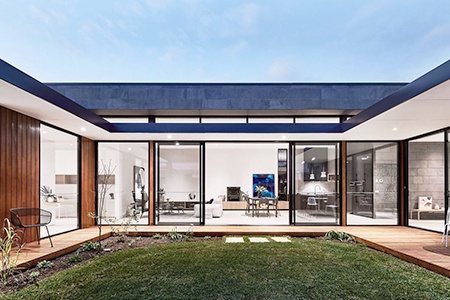
This is a large house that’s built with a courtyard in the center. The main rooms in the home generally connect to the courtyard, but there are numerous variants of this style all over the world with all the types of rooms in the house you could expect.
It’s not as common to find in North America, especially in places that have harsher winters, since the courtyard becomes very impractical once you fill it with snow and may need to go outside to get from room to room.
Duplex House
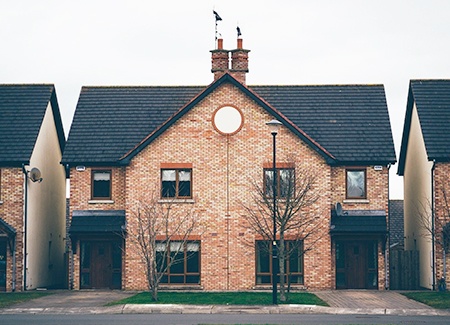
This type consists of two separate living areas in one attached building. Both living areas are completely separate from one another, however in some cases they may share access to a single basement. Each section has their own kitchen, washroom, living room, and so on. These are not to be confused with semi-detached houses.
Snout House
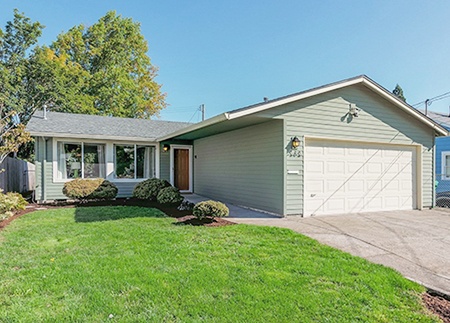
This style refers to a house where the part of the structure that’s closest to the street is the garage. The garage is connected to the house, and sticks out the front, occupying space in the driveway. You can find the snout style appearing in any number of home styles, from single-family dwellings to duplexes, and many more.
Townhouse

A townhouse is like a combination of an apartment and a side-by-side/duplex. Like an apartment, multiple individual homes are attached in one structure, but they have their own entrances.
These are often rented, or can be sold as condos. The individual homes are attached, and sit side-by-side, sharing mutual walls on both sides (except for the units on each end, which only share one wall in common with their neighbors.)
Dogtrot House
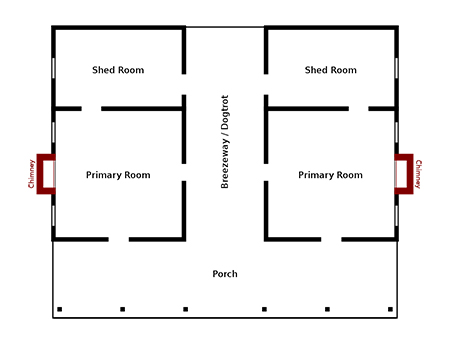
Also called a Breezeway house, and sometimes a possum-trot or dog-run house, is recognized by what is essentially two double pen houses connected by a wide hallway or breezeway sharing one large porch.
These were popular in the Southeast of the United States in the 1800's and 1900's. They were traditionally made of two log cabins combined, though there are more urban variations you can still find among the most modern builds.
Which Home Styles Are Right For You?
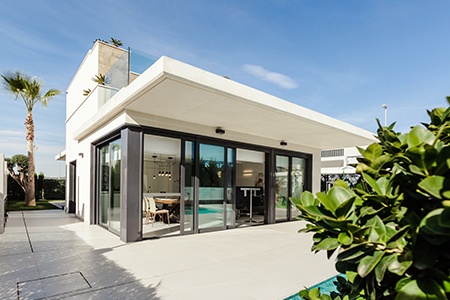
Understanding the intricacies of the various house styles and types of homes can help you choose which one might be the best fit for you. When shopping for homes, we usually look at each house on it’s own.
Knowing the fundamentals of the different types of layouts can help you avoid ones that might not be a great fit, or at least could help you narrow down your search.
Houses in the same neighborhood will usually have similar styles depending on when they were built. Some of these styles are older and you won’t see them in newer homes, whereas others are still prominent.
Some older neighbourhoods have gone through generations of homes and have a mixture of older styles along with new ones. Once you know these things, and what to call them, you’ll start to notice them everywhere.
I remember when I first learned what a “snout” is. We’ve all seen this type of home so many times, but it’s nice to finally have a name for it. I would point out snout houses anytime we would pass one for at least a week or two after learning the term.
Different Types of Houses for Different People!
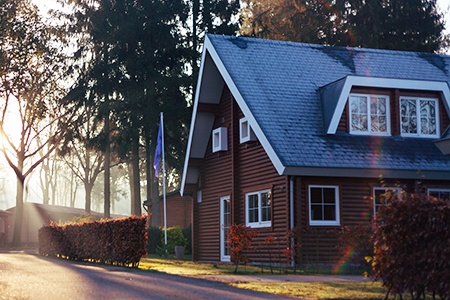
If you’re already settled in a house, this information can still be useful in helping you make choices on how to set things up. When you’re looking for ideas on decorating and styling your house, you can search based on the layout to find examples of houses that are similar to yours, rather than lusting after various types of mansions you can't have right now.
Frankly, it’s kind of frustrating to live in a small house and have to look through a bunch of mega mansions, all the types of castles, or other large homes for inspiration (or vice versa). If you can narrow your search exclusively to homes that are relatively the same size and shape as yours, you’ll have a much easier time finding inspiration and ideas.
You’ll see plenty of information about decorating one room, but what about taking a whole-house approach? The key is to tie it all together, and you need to understand the overall canvas you’re working with to do that.
The flow between rooms is just as important, if not more important, than the aesthetics and design of any singular room when you’re looking at the big picture.
This is just a look into some of the more popular different types of houses, but in reality there are hundreds, if not thousands, of different styles of homes that are used all around the world, especially if we start to look back through history.
You'll Also Enjoy:
- Types of Coffee Makers: Choosing Correctly & Why It Matters
- Family Room vs Living Room: Is There Even a Difference?
- Standard Garage Size: Diagrams & Dimensions Up to 4 Car Garages
- The Best Substitute for Laundry Detergent is Already In Your Home
- How to Hide Exposed Pipes: Creative Ways to Cover & Conceal



